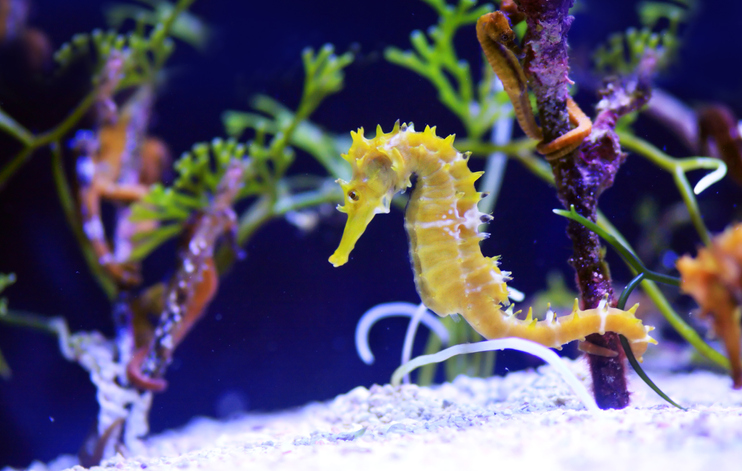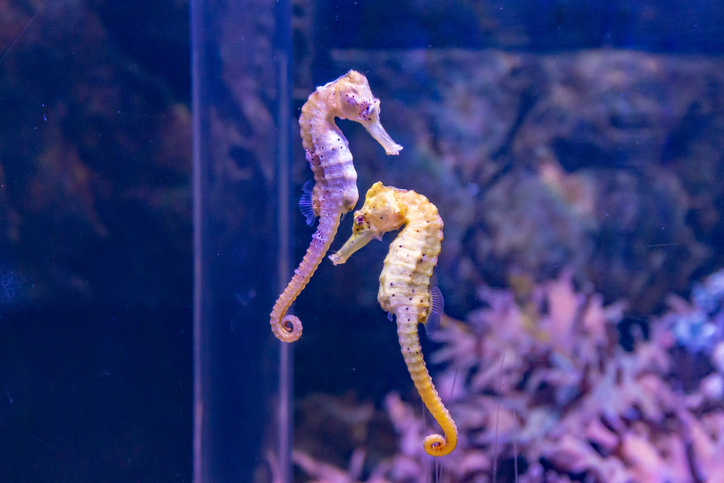Seahorses belong to the family Syngnathidae – which also includes Pipefish and
Seadragons.
Seahorses are found in shallow, tropical and temperate waters around the world,
and they are often found in seagrass beds and coral reefs.
Seahorses are able to change color to blend in with their surroundings and avoid
predators. They are also able to change color as a form of communication and
social signaling.
Seahorses are poor swimmers and rely on their long, thin tails to anchor
themselves to underwater structures and avoid being carried away by currents.
Male seahorses are responsible for carrying and incubating the eggs – which they
do in a specialized pouch on their belly. After the eggs hatch, the male seahorse
releases fully-formed juvenile seahorses into the water.
Seahorses are able to consume large amounts of prey relative to their body size,
and they feed on a variety of small crustaceans and other planktonic organisms.

Several species of seahorse are considered threatened or endangered due to overfishing and habitat destruction.
Seahorses have a unique form of locomotion, where they propel themselves
forward by rapidly flapping their dorsal fin, which is located on their back.
Seahorses have no teeth or stomach, so they must consume food frequently and
in small amounts to survive.
Seahorses have a long lifespan, with some individuals living up to 5 years in the
wild and over 10 years in captivity if cared for properly.


